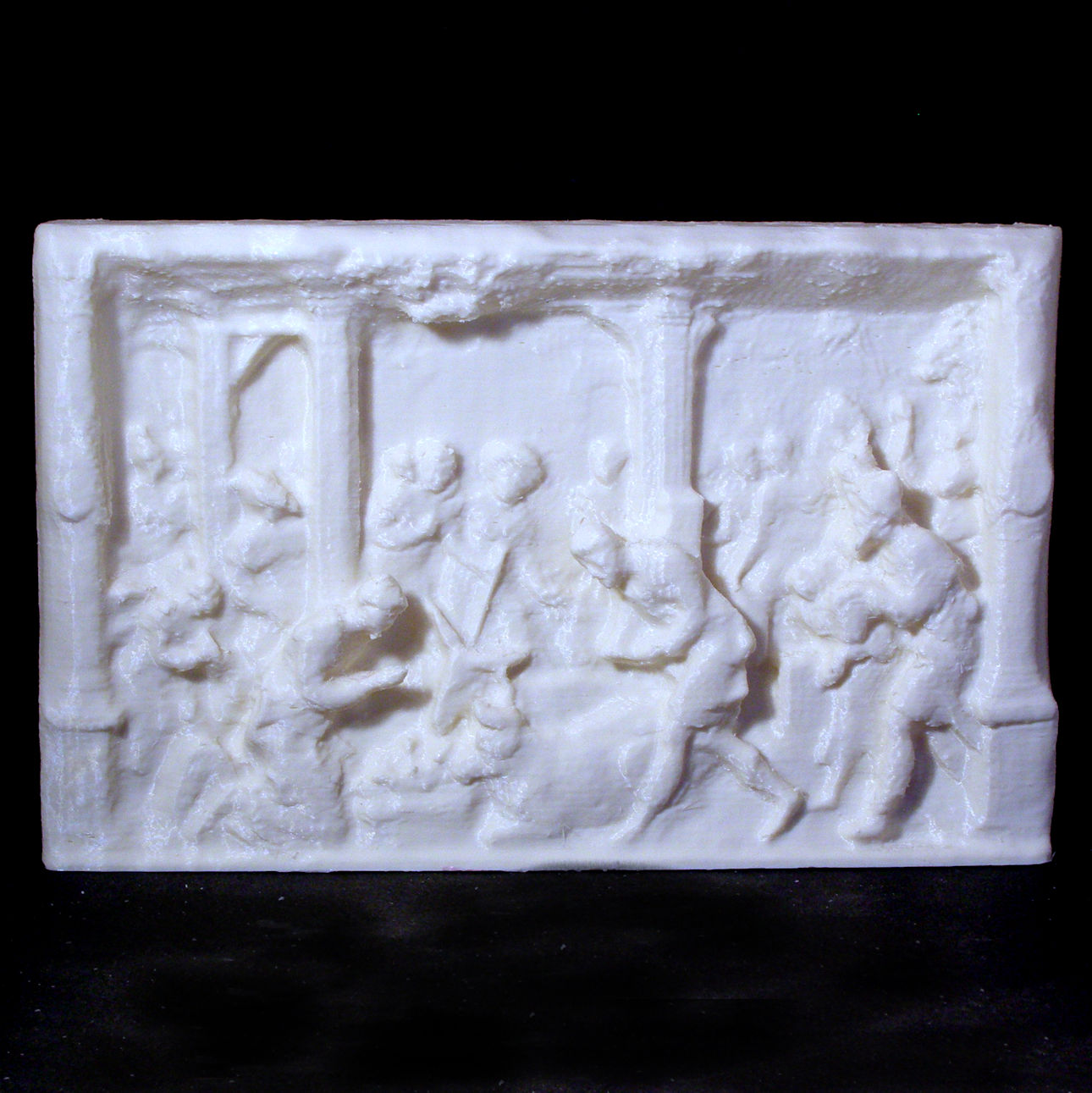
Adoration of the Magi
myminifactory
-- Importance, significance of the statue The Adoration of the Magi or Adoration of the Kings is the name traditionally given to the subject in the Nativity of Jesus in art in which the three Magi, represented as kings, especially in the West, having found Jesus by following a star, lay before him gifts of gold, frankincense, and myrrh, and worship him. It is related in the Bible by Matthew 2:11: "On entering the house, they saw the child with Mary his mother; and they knelt down and paid him homage. Then, opening their treasure chests, they offered him gifts of gold, frankincense, and myrrh. And having been warned in a dream not to return to Herod, they left for their own country by another path". -- Who is depicted? In the earliest depictions, the Magi are shown wearing Persian dress of trousers and Phrygian caps, usually in profile, advancing in step with their gifts held out before them. These images adapt Late Antique poses for barbarians submitting to an Emperor, and presenting golden wreaths, and indeed relate to images of tribute-bearers from various Mediterranean and ancient Near Eastern cultures going back many centuries. The earliest are from catacomb paintings and sarcophagus reliefs of the 4th century. Crowns are first seen in the 10th century, mostly in the West, where their dress had by that time lost any Oriental flavour in most cases. The standard Byzantine depiction of the Nativity included the jorney or arrival of the mounted Magi in the background, but not them presenting thir gifts, until the post-Byzantine period, when the western depiction was often adapted to an icon style. Later Byzantine images often show small pill-box like hats, whose significance is disputed. -- Technical/Specification about the statue A stele is a stone or wooden slab, generally taller than it is wide, erected in ancient Western culture as a monument, very often for funerary or commemorative purposes ("grave steles"). Stelae as slabs of stone may also be used for ancient Greek and Latin government notices or as territorial markers to mark borders or delineate land ownership. The surface of the stele may very often have text and/ or have ornamentation. This ornamentation may be inscribed, carved in relief, or painted onto the slab. Traditional Western gravestones may technically be considered the modern equivalent of ancient stelae, though the term is very rarely applied in this way. Equally, stelae-like forms in non-Western cultures may be called by other terms, and the words "stele" and "stelae" are most consistently applied in archaeological contexts to objects from Europe, the ancient Near East and Egypt, China, and sometimes Pre-Columbian America. -- More about the artist We don't know who is the creator of this stele, it is way too old, and there is any signature to identify who it could be.
With this file you will be able to print Adoration of the Magi with your 3D printer. Click on the button and save the file on your computer to work, edit or customize your design. You can also find more 3D designs for printers on Adoration of the Magi.
